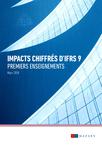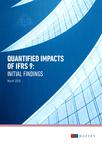At the end of February 2018, all the major European banks published information on the impact of the implementation of the new standard IFRS 9. IFRS 9 introduces numerous changes (classification, impairment, hedging, etc.). Their impacts at the transition date vary widely from one bank to another. They are negative in most cases, but for some banks are virtually nil or even positive. The indicators used are also variable: though the impact on the CET1 ratio is a firm common indicator, the level of further detail reported varies significantly from one institution to another.
To take stock and uncover the initial trends, we chose to conduct this study on the 30 first European banks publishing their accounts under IFRS. This deliberately brief study provides a rapid overview of the estimated impacts of IFRS 9 and the approach to reporting adopted by the banks.
Sample of European banks
|
| leading STOXX Europe 600 banks preparing their consolidated accounts under IFRS |
Key indicators
| of the banks in the sample reported the impact of IFRS 9 on their CET1 ratio, either quantitatively, or by indicating that the expected impact was not significant |
Analysis of IFRS 9 impacts by phase
- Phase 1 of the standard introduced new requirements for the classification and measurement of financial instruments;
- Phase 2 of the standard introduced new impairment principles;
- Phase 3 of the standard introduced new rules for hedge accounting.
| of the banks in our sample reported on the impacts of IFRS 9 by phase |
Discover our full analysis below
Documents
Impacts chiffrés d'IFRS 9 - premiers enseignements.pdf
Quantified impacts of IFRS 9 - initial findings.pdf

In partnership with the Economist Intelligence Unit, Mazars has developed a unique programme of thought leadership to examine the current challenges the Financial Services industry is facing. The series of articles focuses on the current transformation of the financial services industry and its likely shape in the future from three different but related perspectives: technological, regulatory and...






